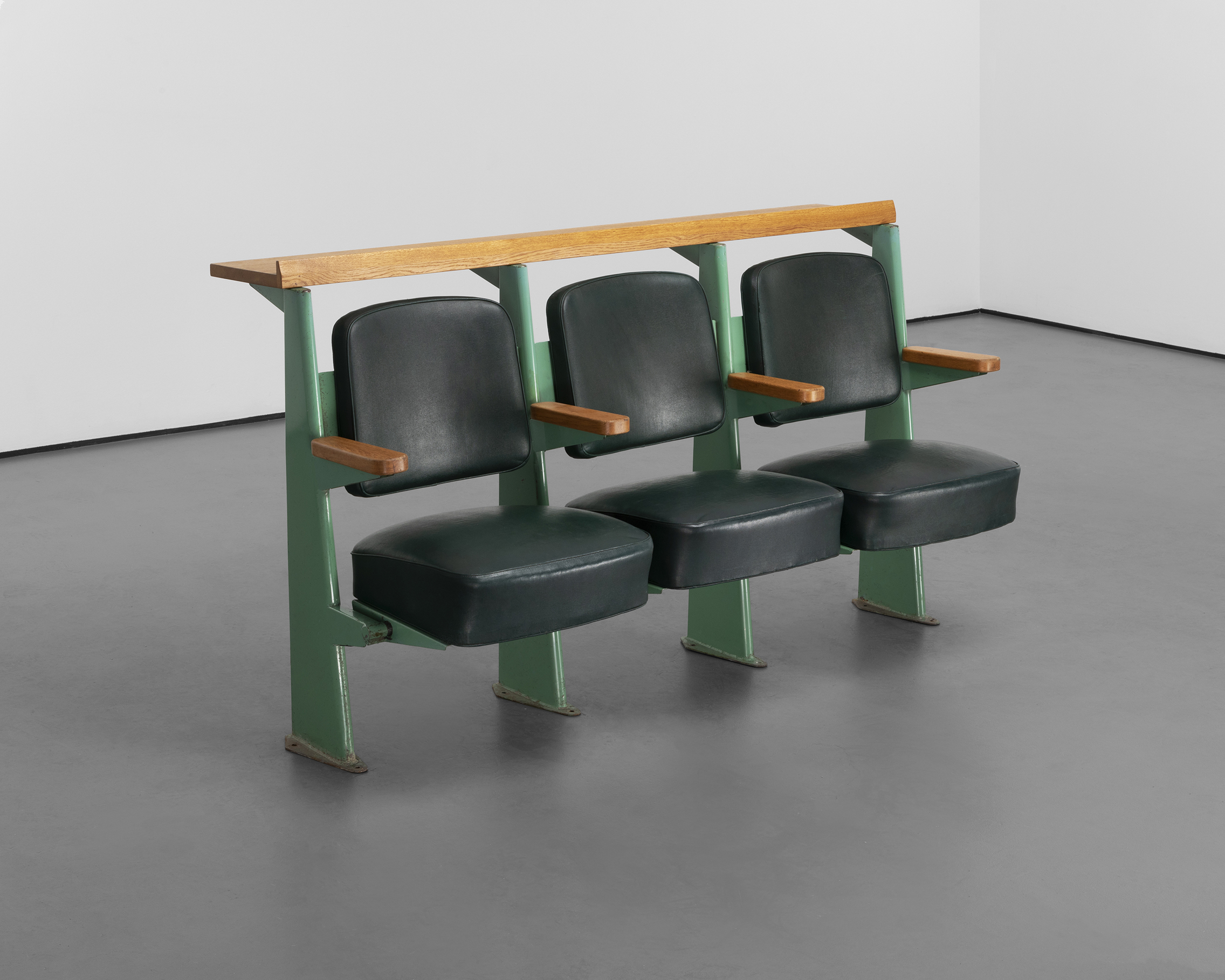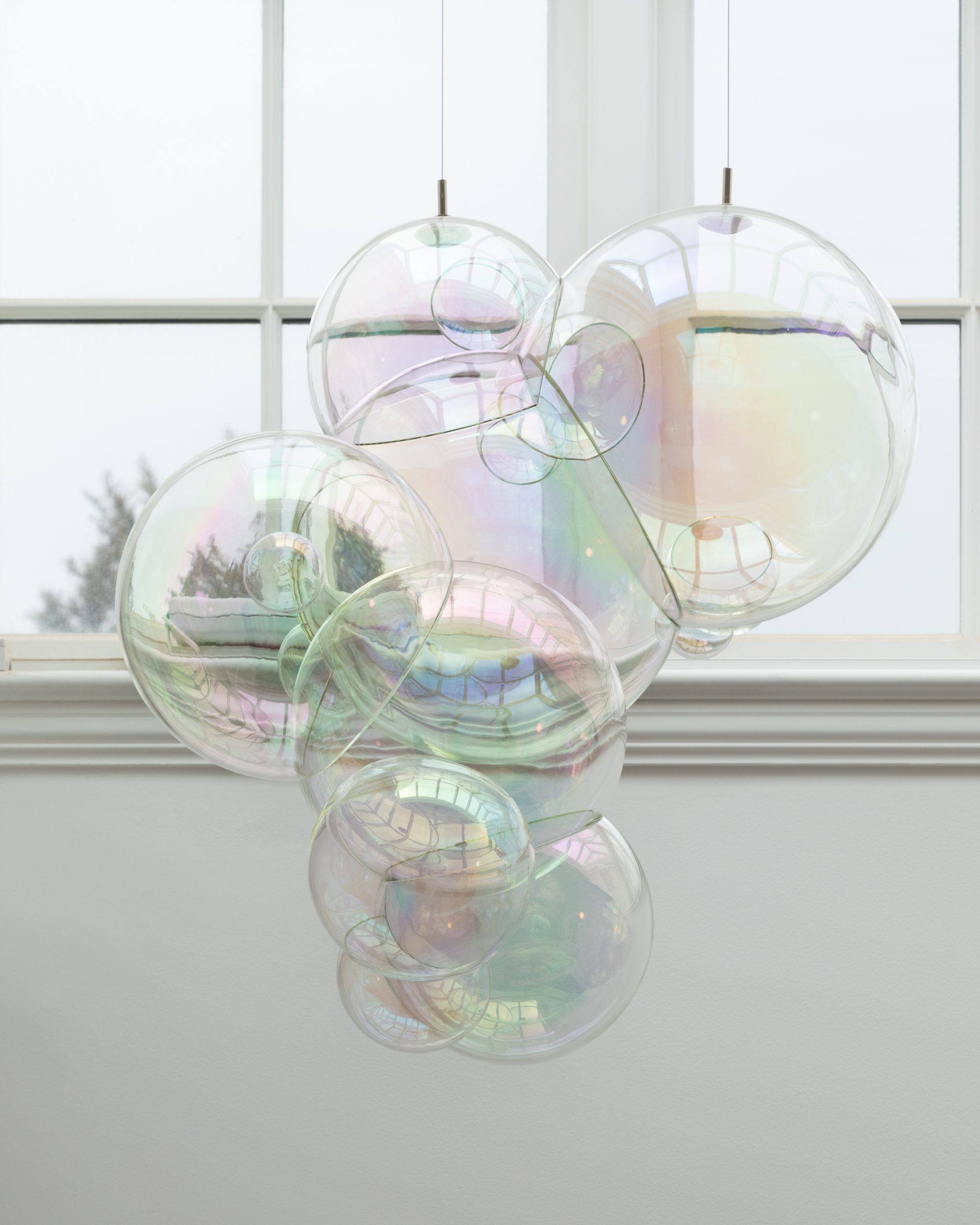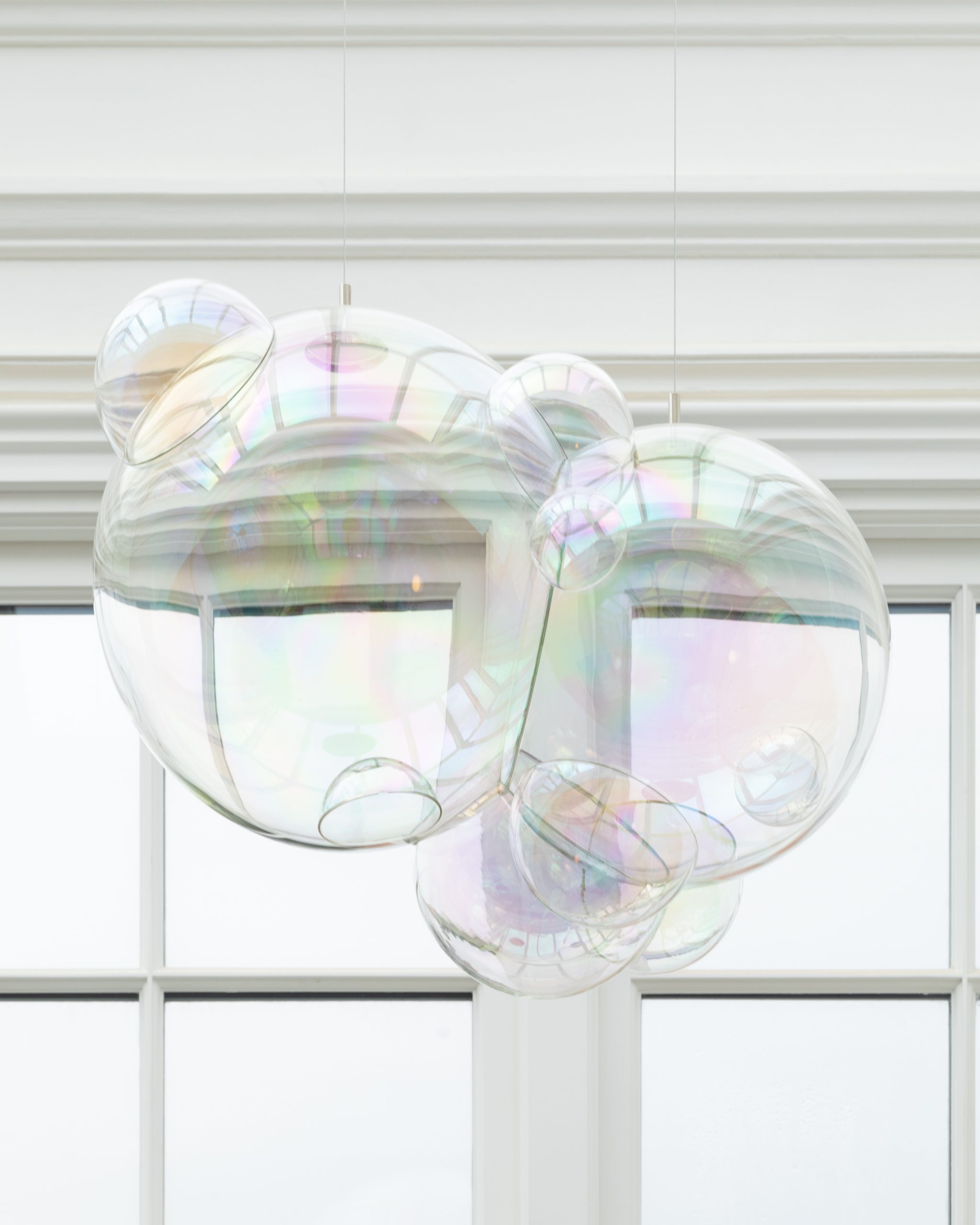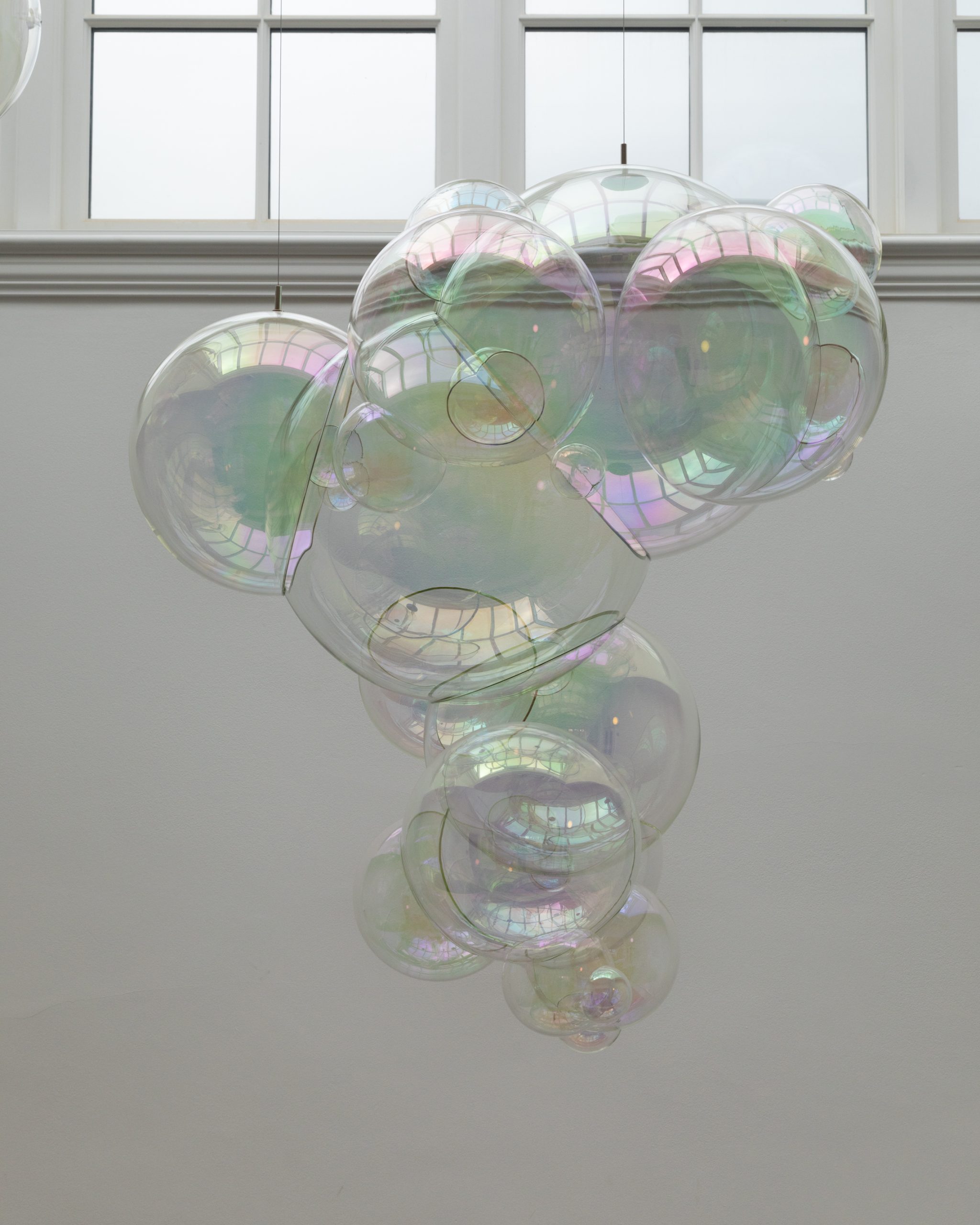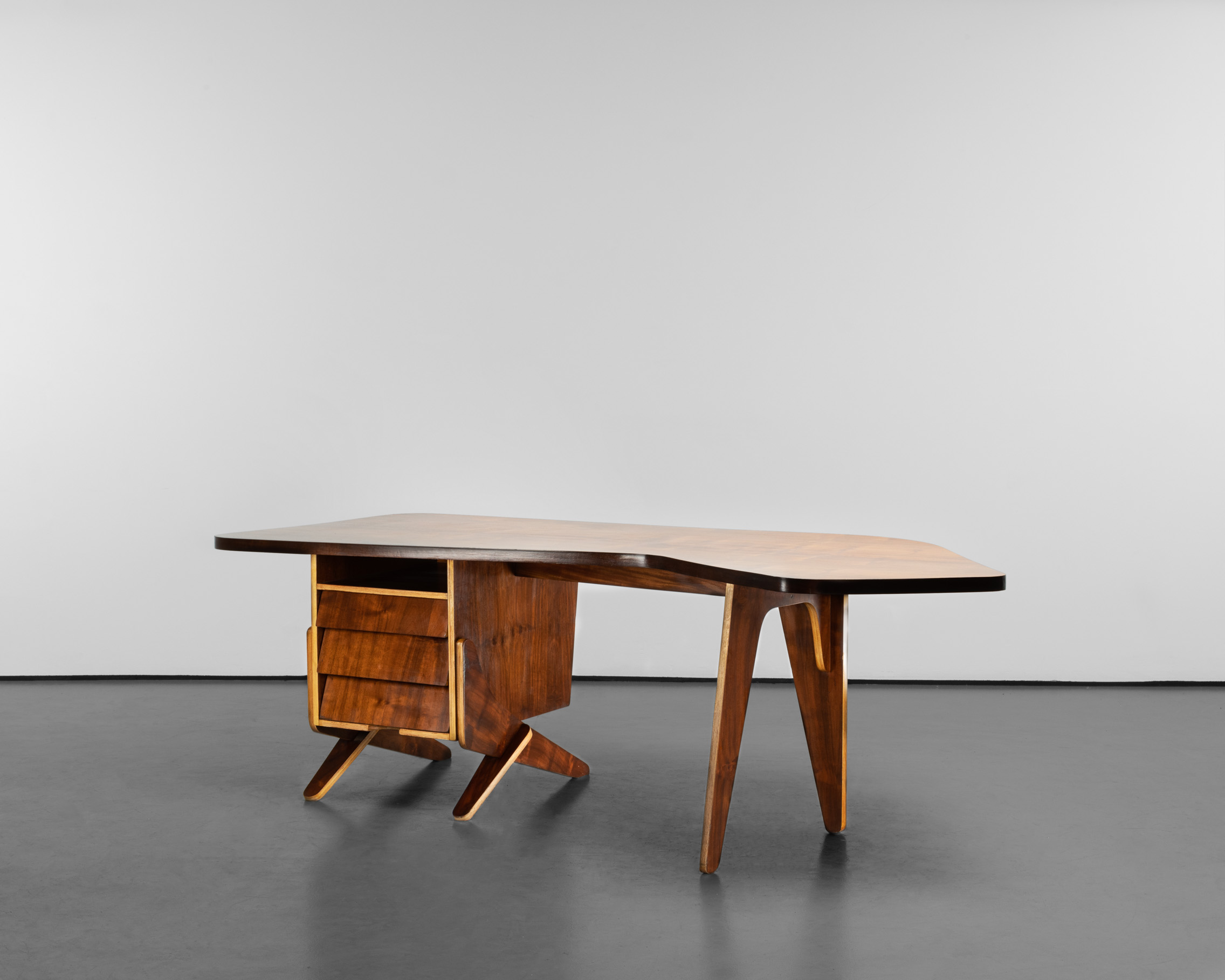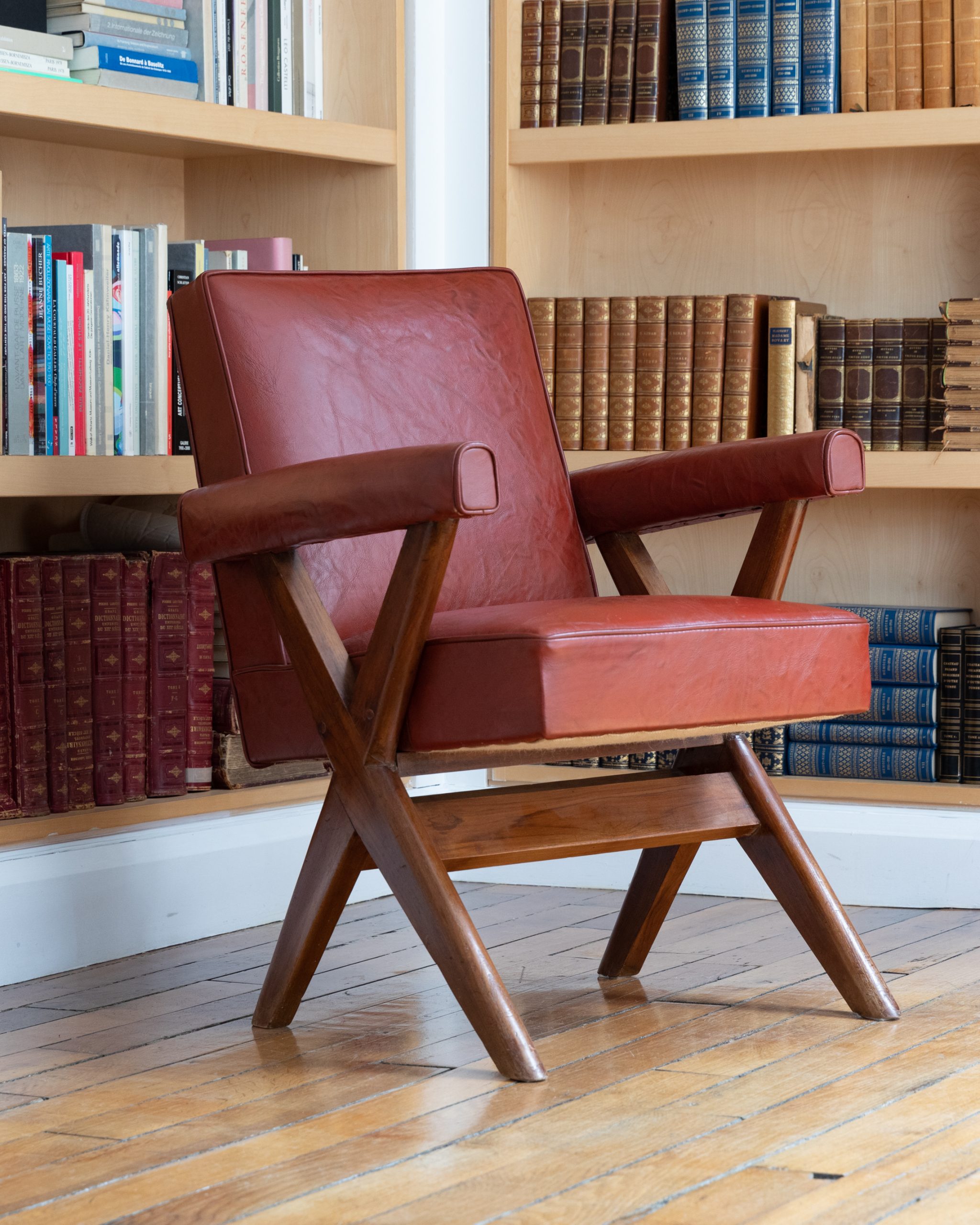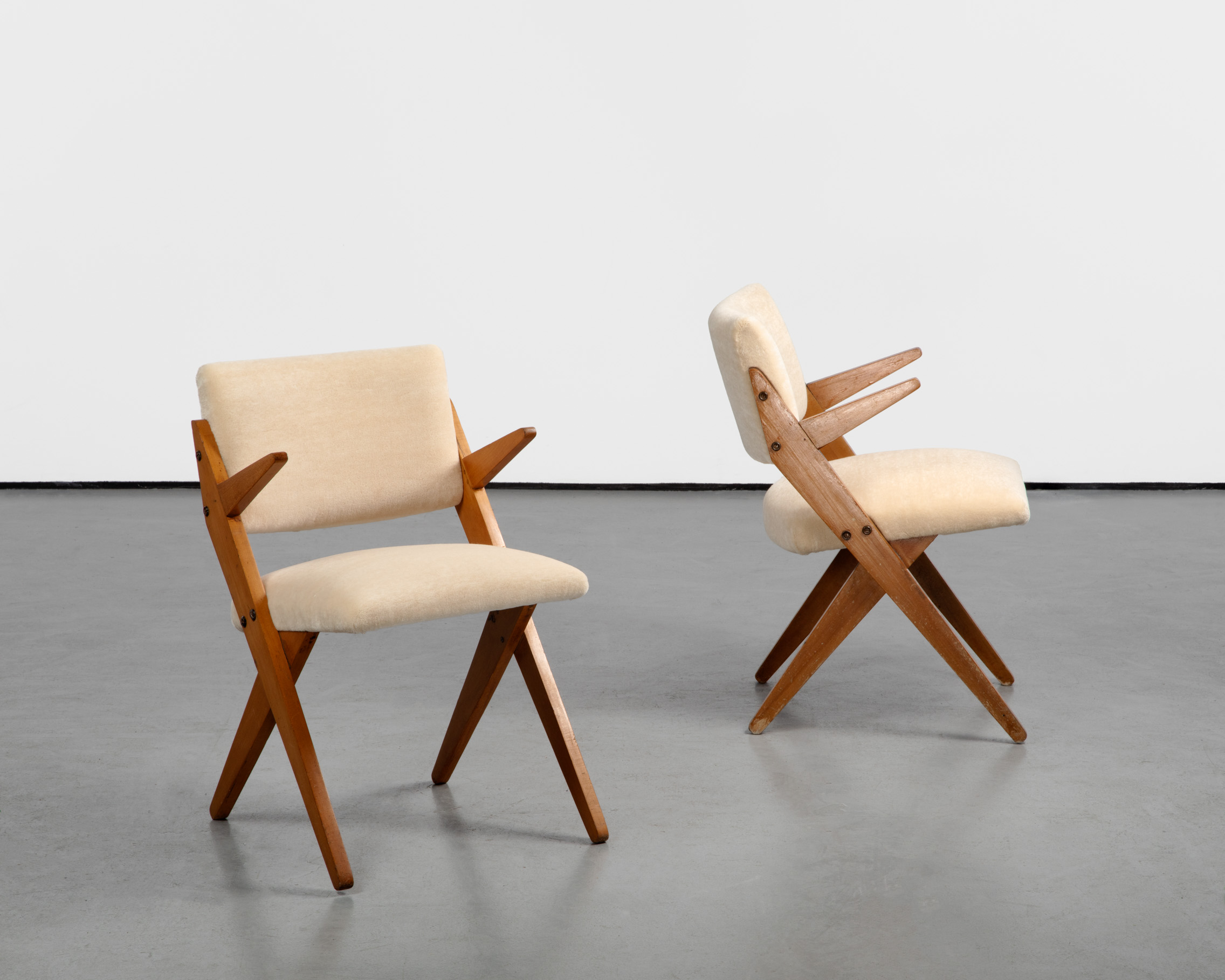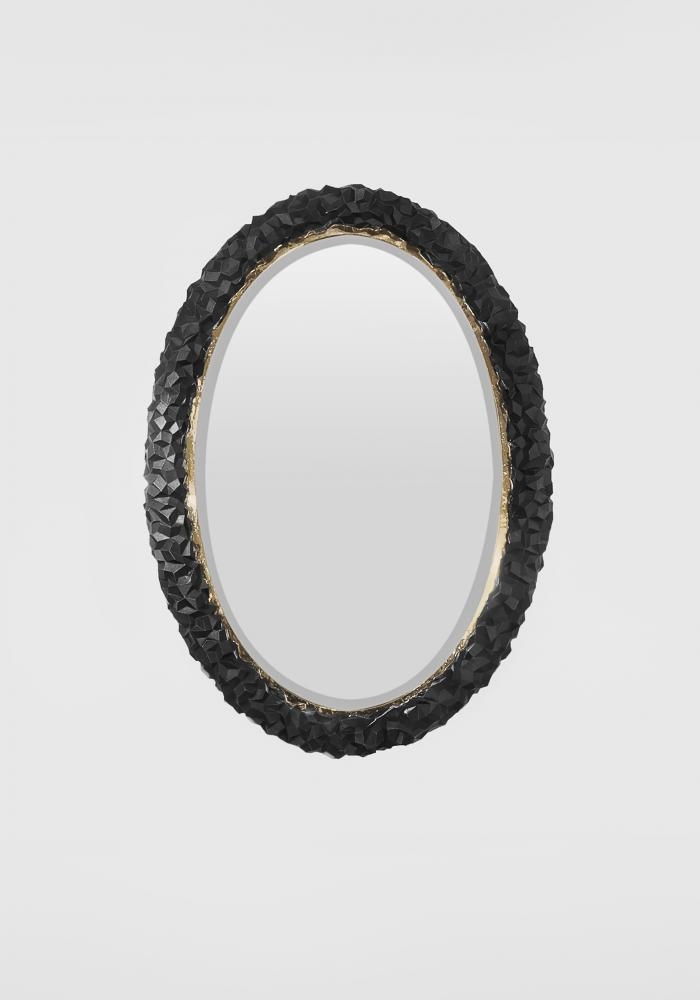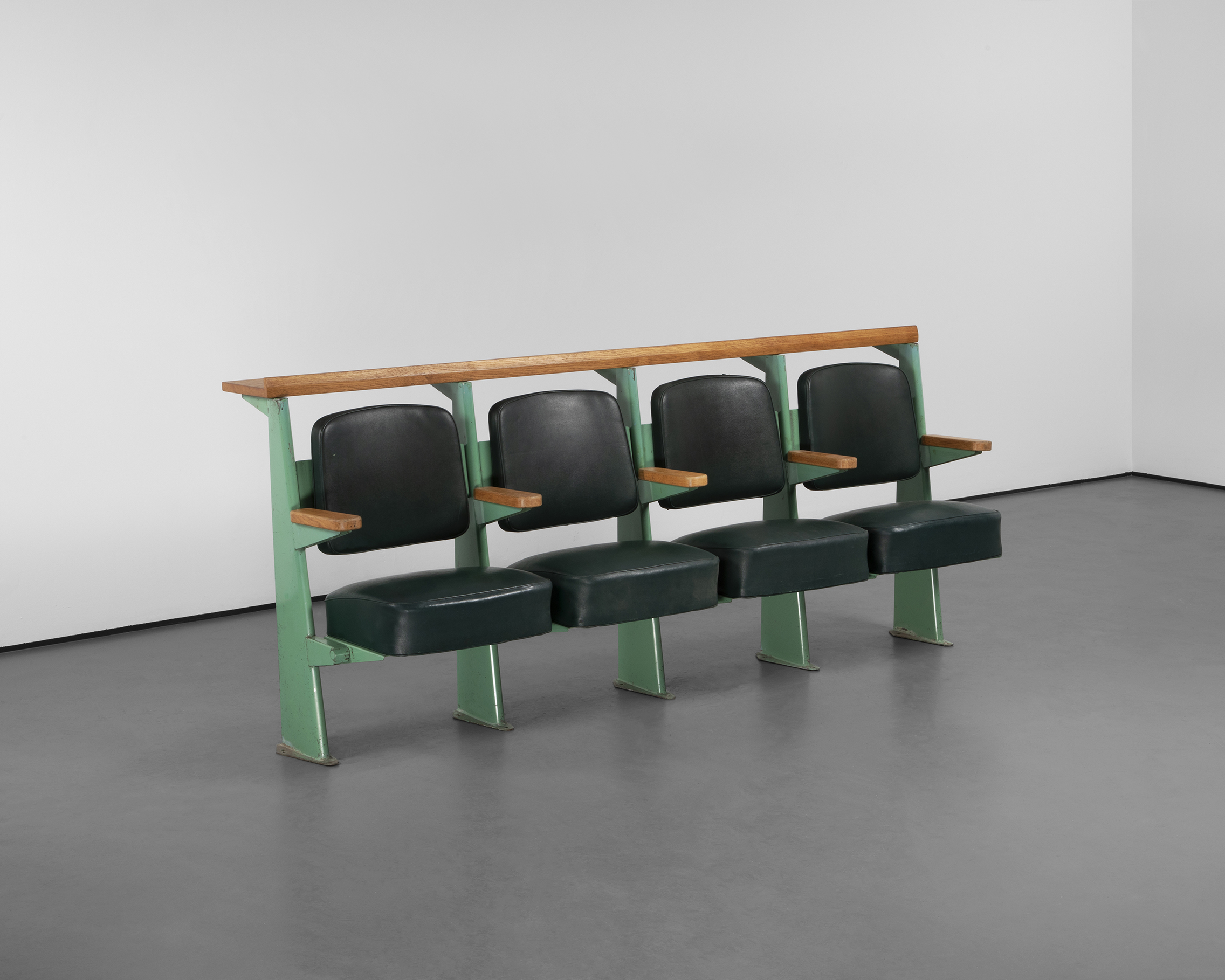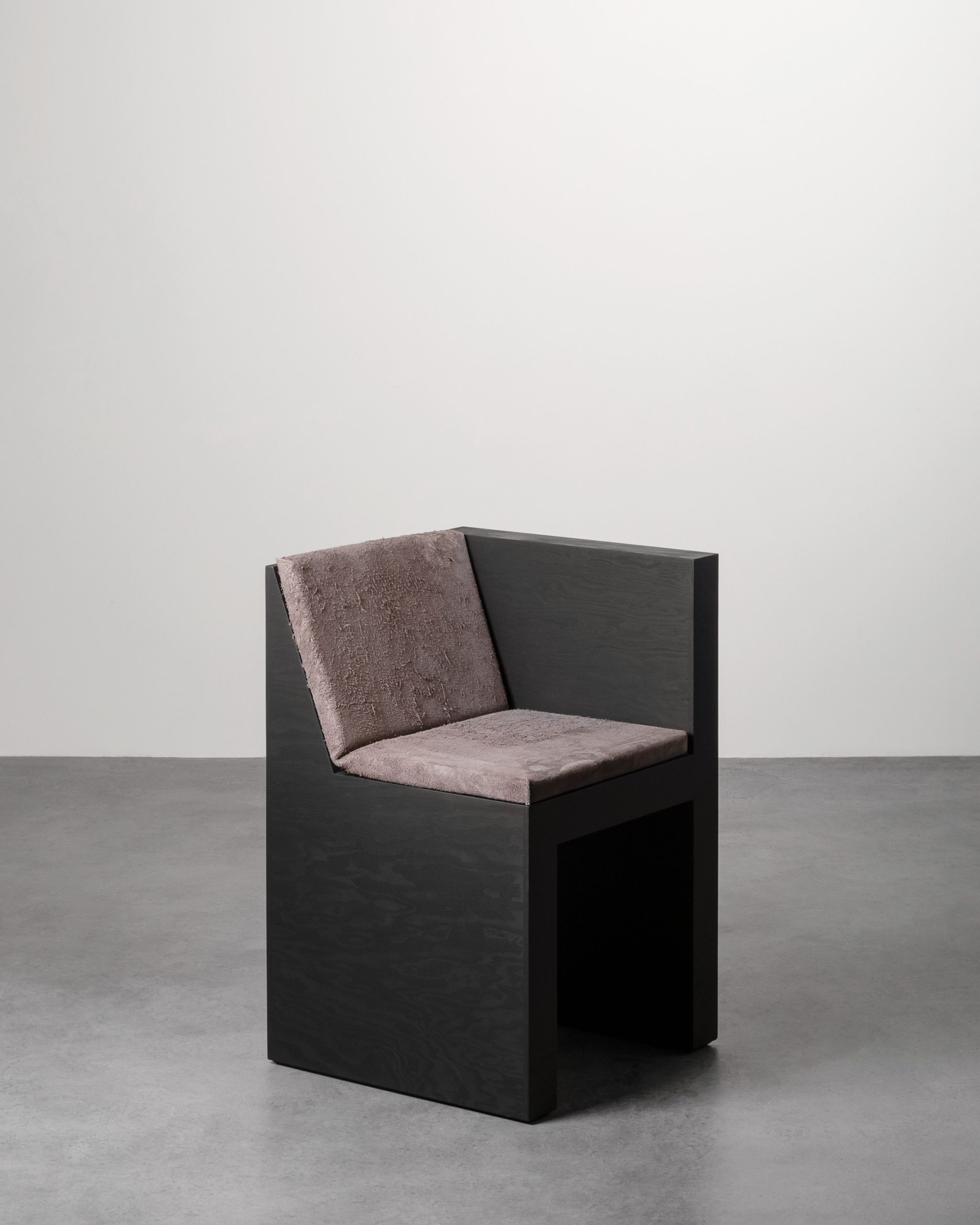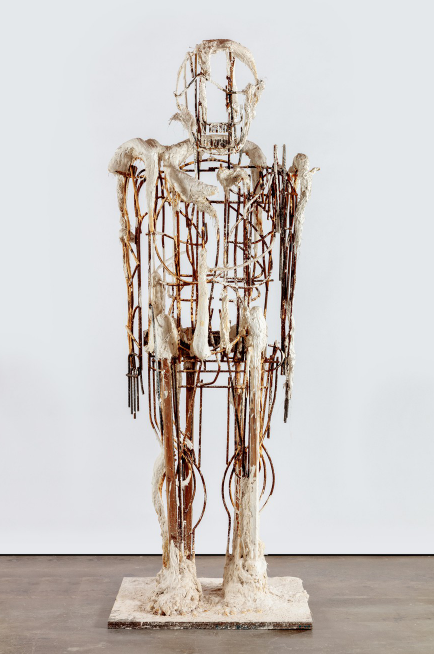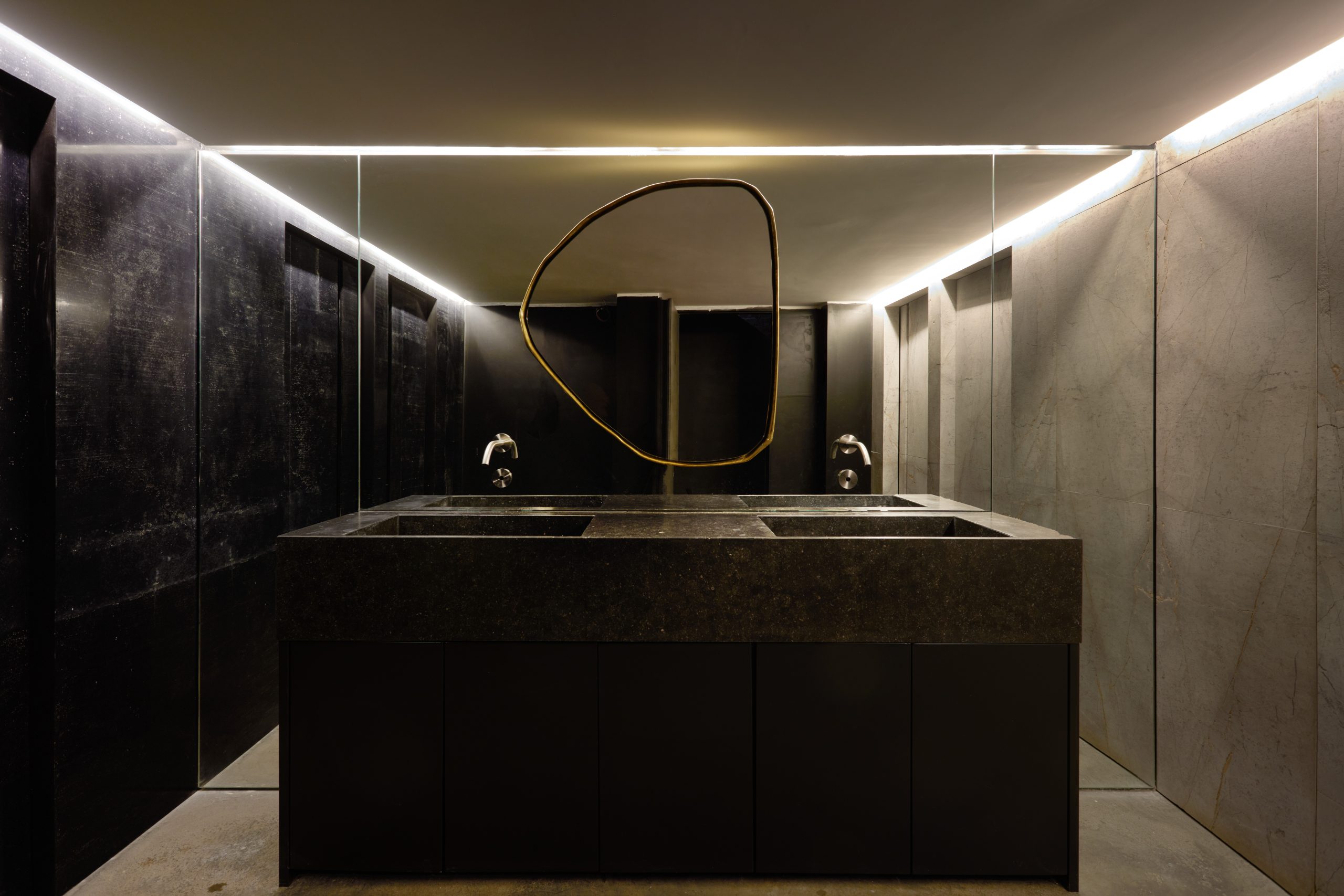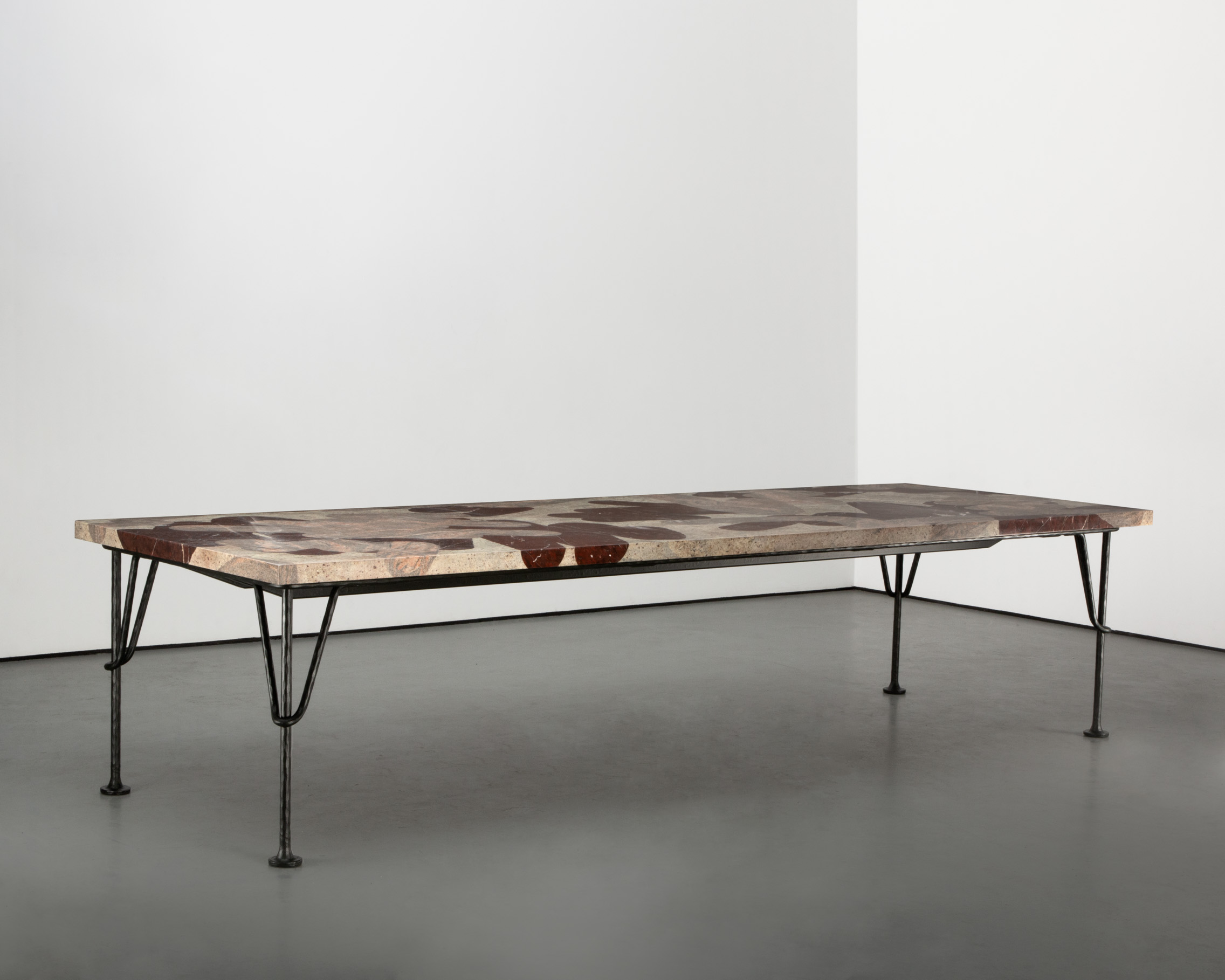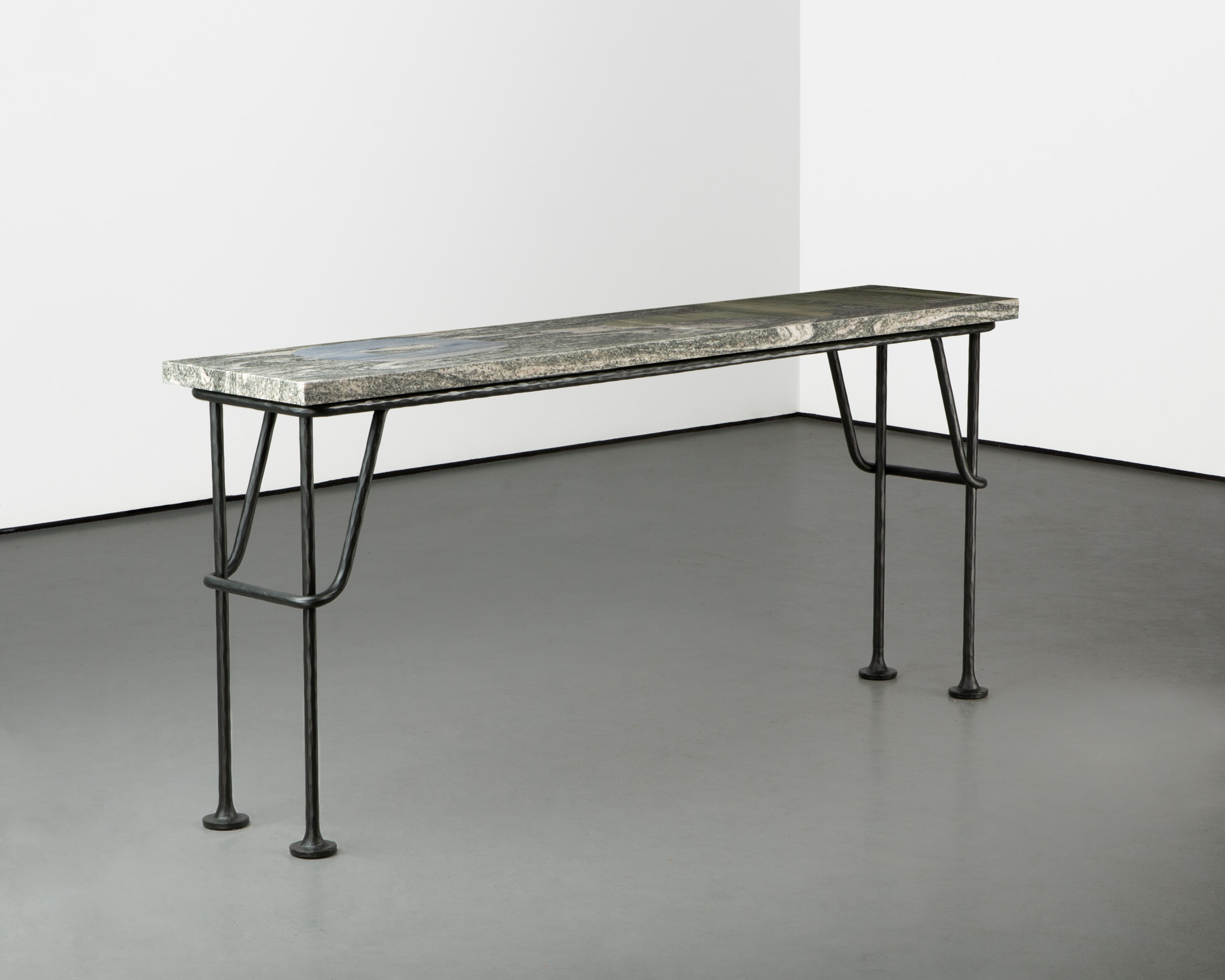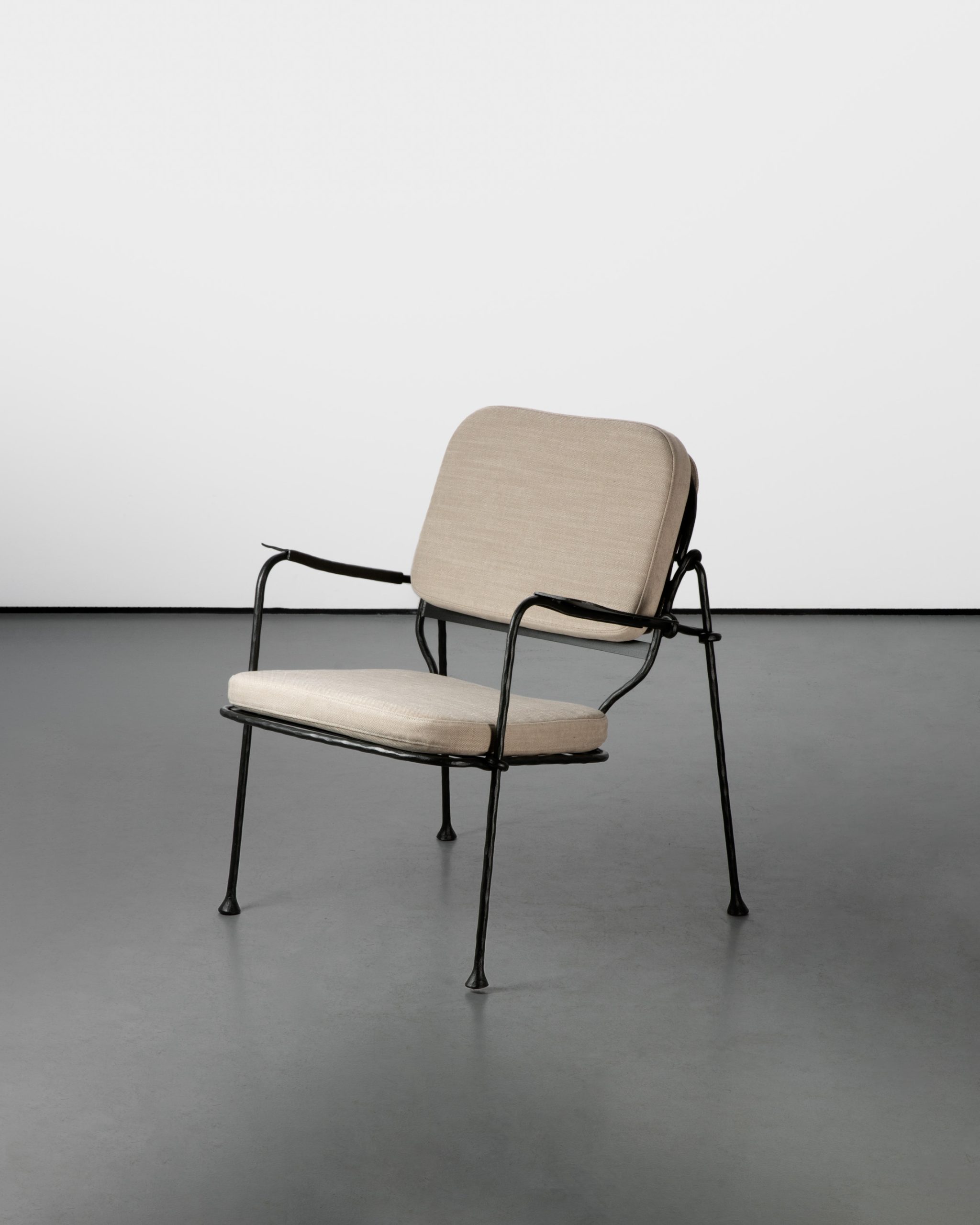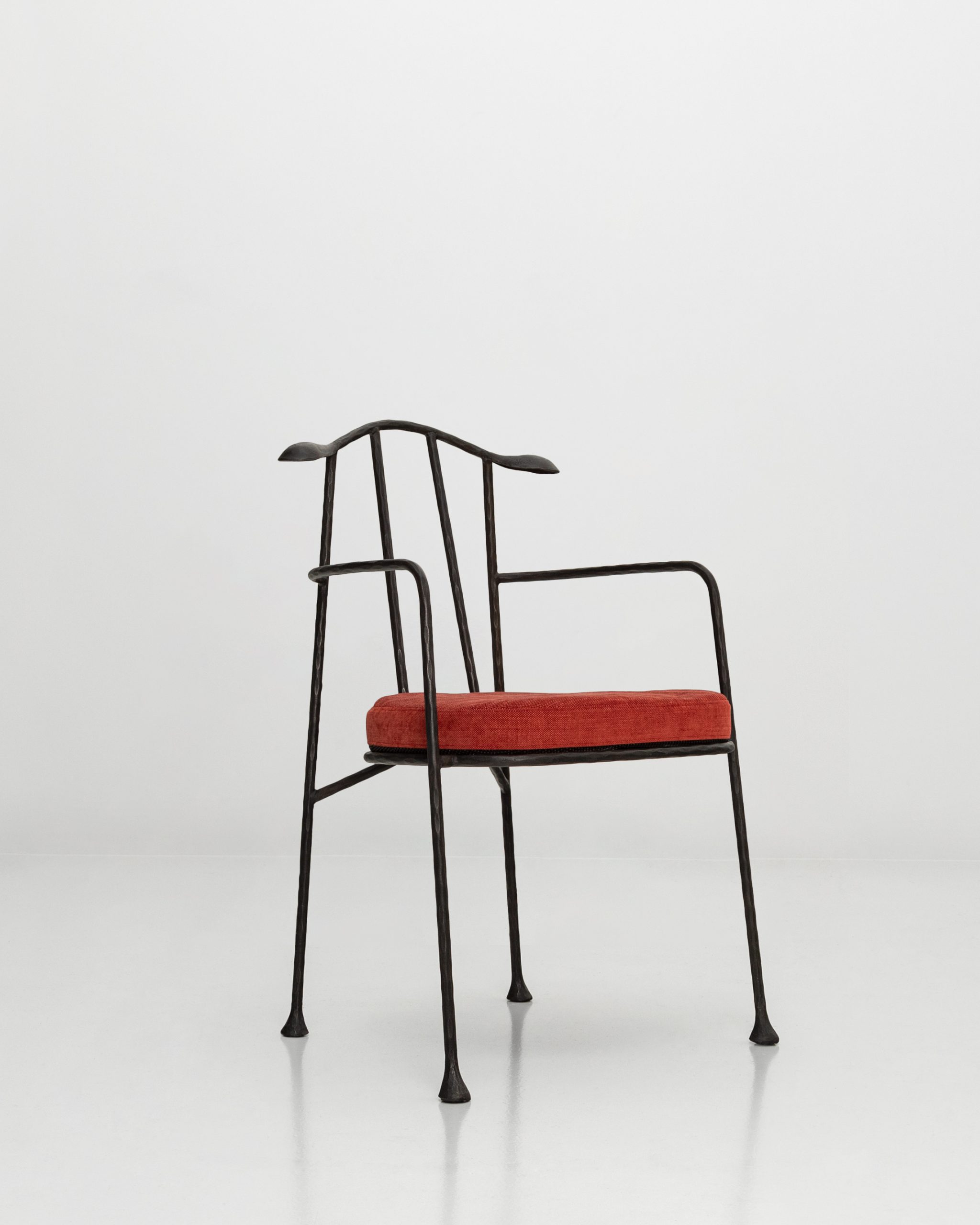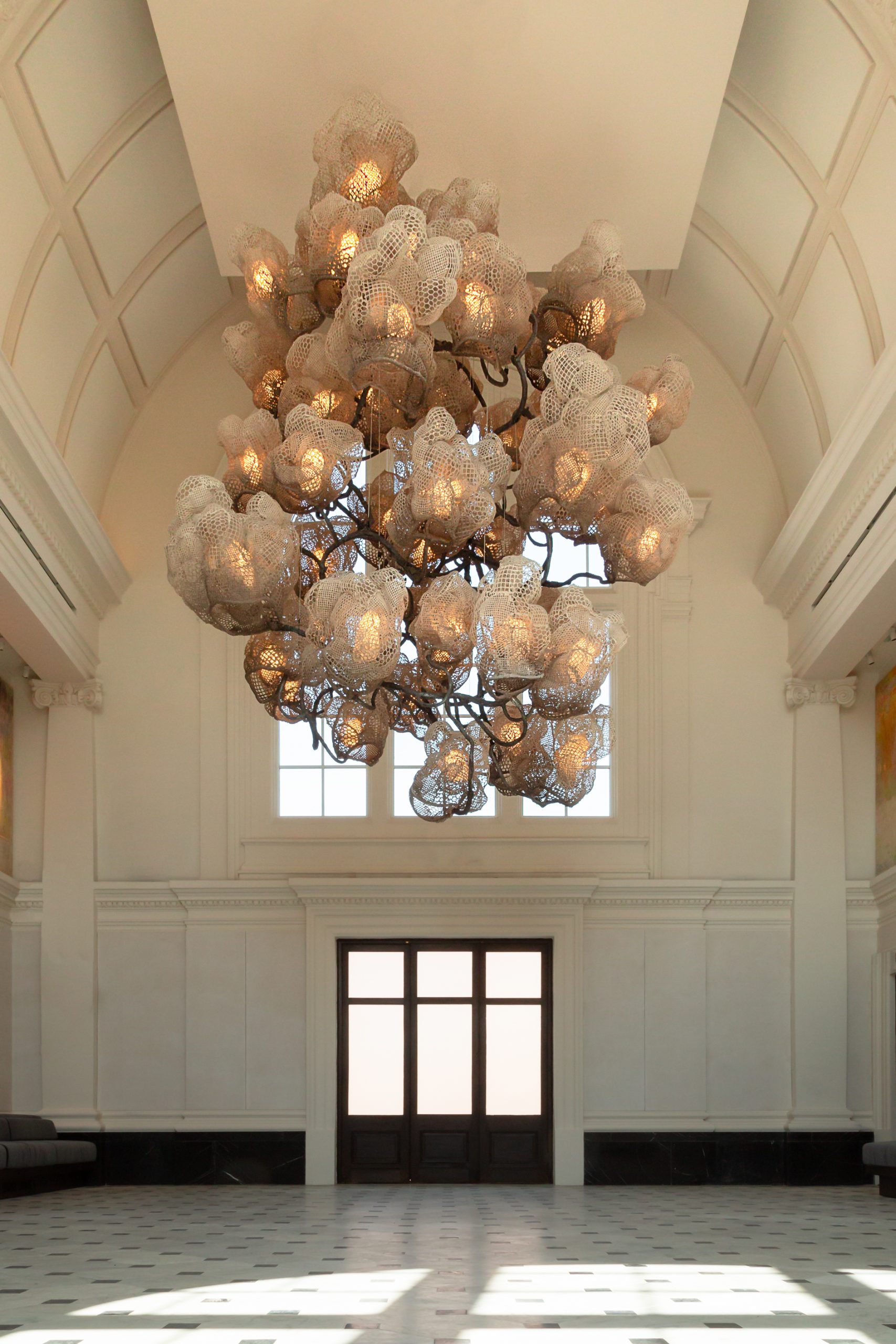
Nacho Carbonell, Ladbroke Hall Cocoon Chandelier, 2023
Nacho Carbonell’s Ladbroke Hall Cocoon Chandelier concaves into tree-like forms as it spawns into a luminescent forest hanging from above. Swathed in metal mesh with Paverpol and pigments, the metal welded branch cradles the soft, angelic glow of the light fittings and the decorative entanglement of the silicone cables wrapped within. The artist views objects as living organisms, where natural materials, textures and techniques come to life and spark imagination in the viewer. This artwork was custom-made for Ladbroke Hall, the arts and culture venue in Notting Hill and home to Carpenters Workshop Gallery’s London location. The artwork hangs invitingly from the ceiling of Pollini at Ladbroke Hall, the award-winning Italian restaurant by chef Emanuele Pollini.
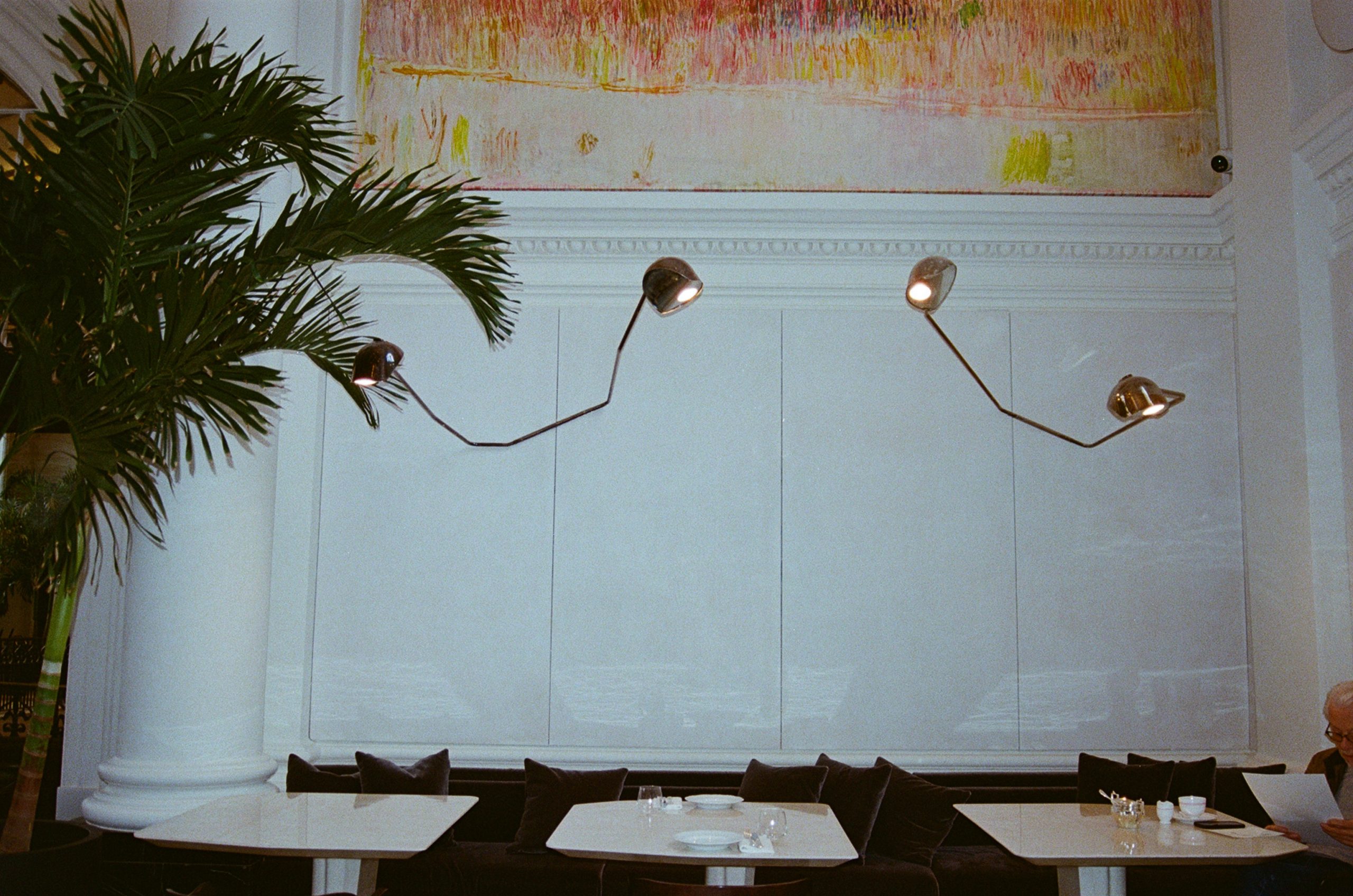
Vincenzo De Cotiis, DC612 Custom Wall Lamp, 2009
Working at the intersection between art and architecture, Vincenzo de Cotiis defies categorisation through his creations. Veering on the futuristic, a dystopian world is amassed through sleek, spaceship-esque surfaces, contorting structures and juxtaposing materials laced with history. The DC612 Custom Wall Lamp positions itself on the interior as if it were a climbing, metallic arm, stretching at either end with the LED bulb grasping at its fingers. The trunk is crafted from silver plated brass and is displayed with an angular, geometric composition, illuminating the space with non-linear forms and beams of light.
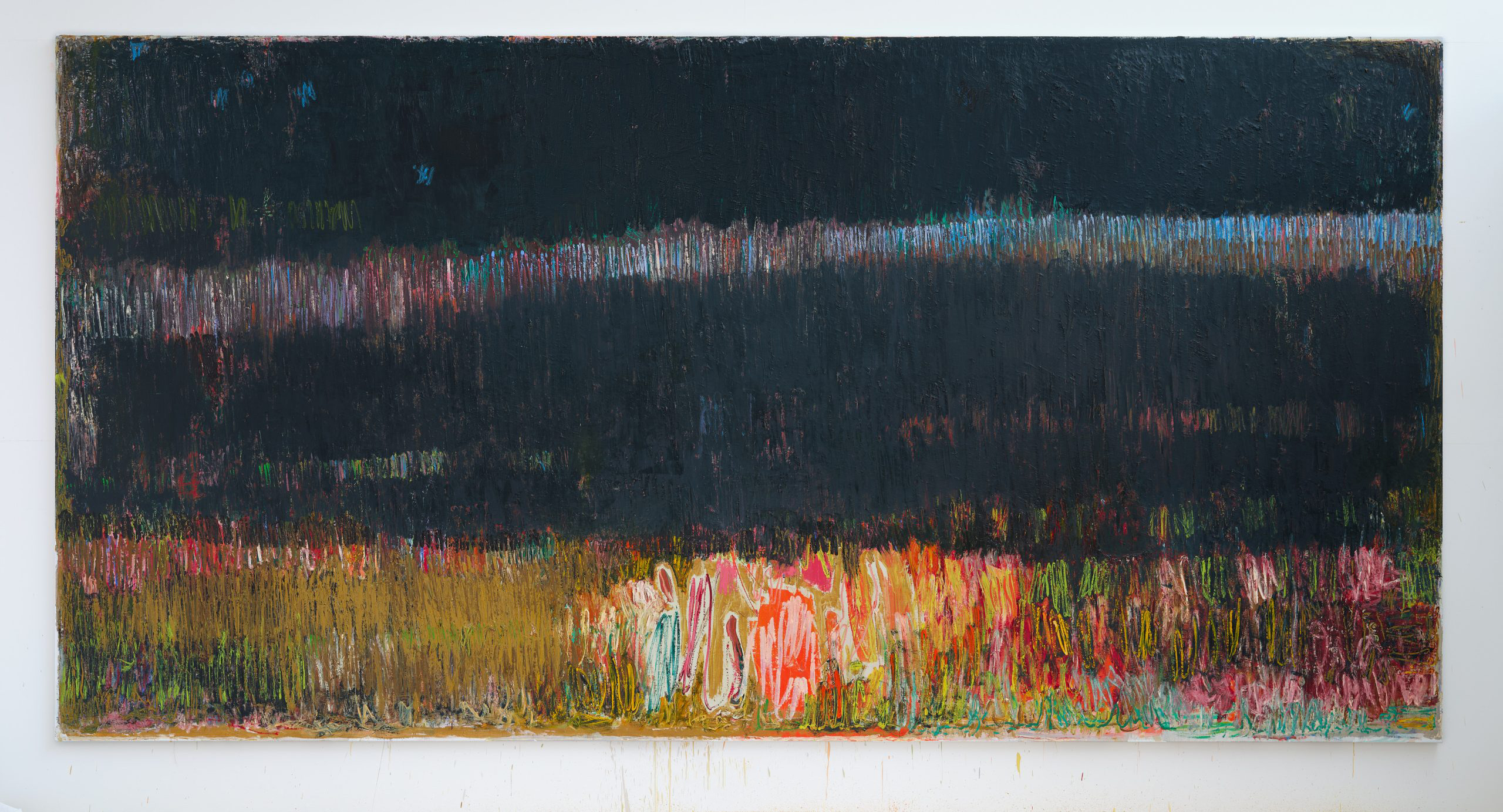
Christopher Le Brun, Snow, 2022
Christopher Le Brun’s Snow is part of a wider body of work entitled The Series, which groups together four paintings that each represent the developing phases of the year. Named Leaf, Rose, Wheat and Snow, the artworks are on display at Ladbroke Grove, arts venue and Carpenters Workshop Gallery’s flagship space, alongside three other paintings decorating the walls of the restaurant, designed by Vincenzo de Cotiis. The environment exudes natural light through the large windows, casting ever-changing weather patterns onto the paintings and giving the artworks the appearance of the seasons in flux. Snow beholds the darker colour palette of the bunch and echoes the dark, blistering months of the winter.
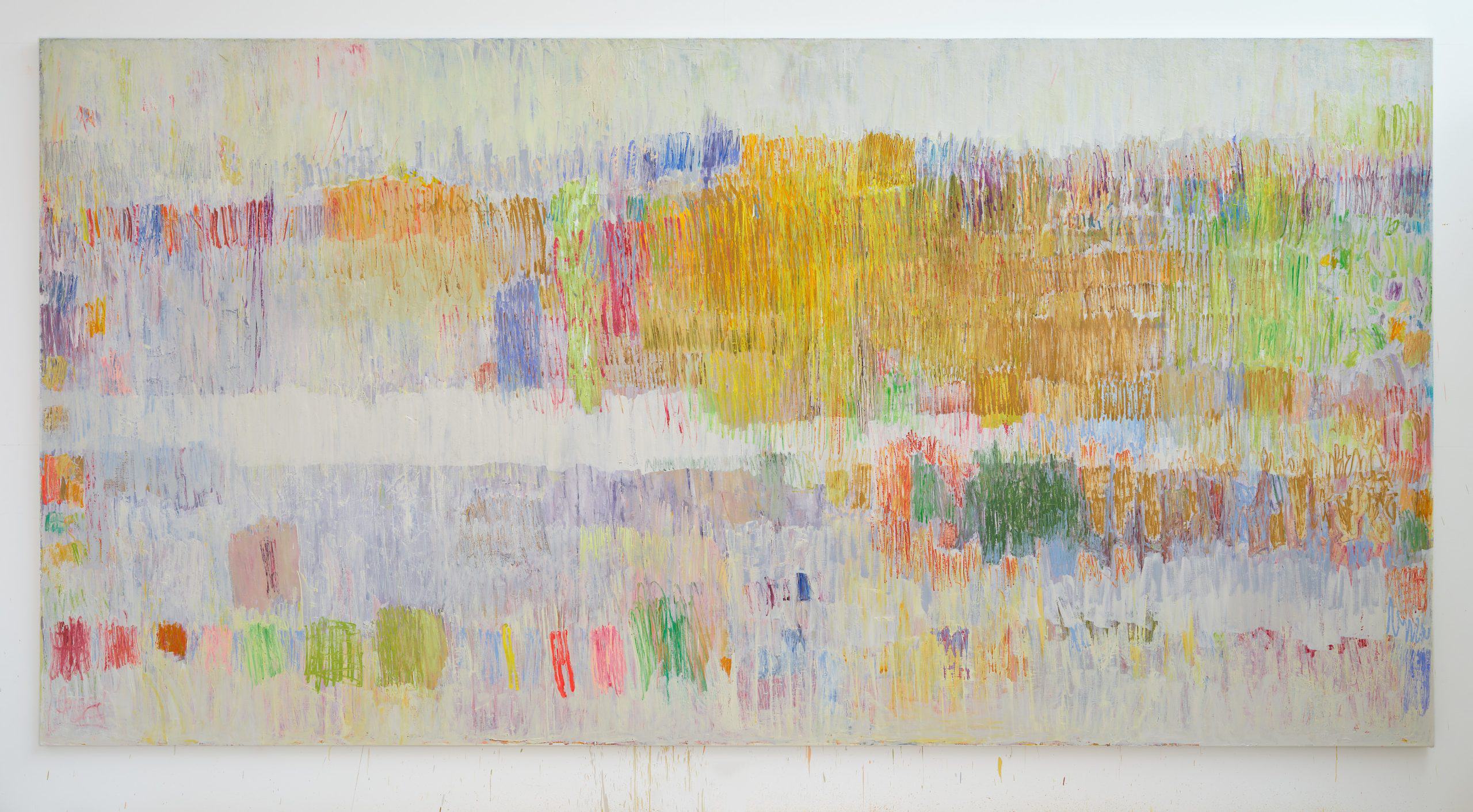
Christopher Le Brun, Leaf, 2022
Christopher Le Brun’s Leaf is part of a wider body of work entitled The Series, which groups together four paintings that each represent the developing phases of the year. Named Leaf, Rose, Wheat and Snow, the artworks are on display at Ladbroke Grove, arts venue and Carpenters Workshop Gallery’s flagship space, alongside three other paintings decorating the walls of the restaurant, designed by Vincenzo de Cotiis. The environment exudes natural light through the large windows, casting ever-changing weather patterns onto the paintings and giving the artworks the appearance of the seasons in flux. Leaf is awash with light, airy tones and staccato brush marks, reminiscent of spring’s sprouting blooms making their first appearance after a long, restful sleep.
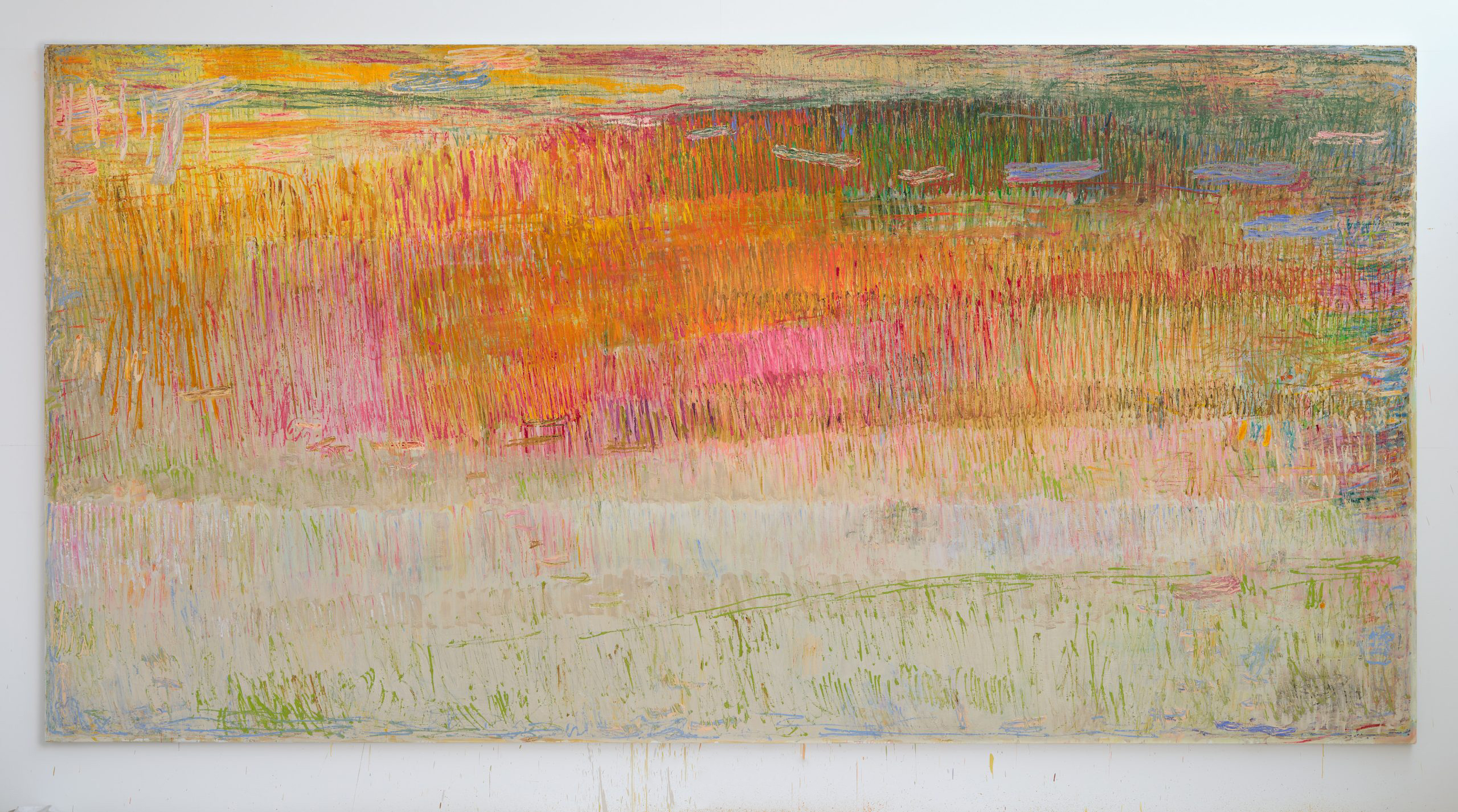
Christopher Le Brun, Wheat, 2022
Christopher Le Brun’s Wheat is part of a wider body of work entitled The Series, which groups together four paintings that each represent the developing phases of the year. Named Leaf, Rose, Wheat and Snow, the artworks are on display at Ladbroke Grove, arts venue and Carpenters Workshop Gallery’s flagship space, alongside three other paintings decorating the walls of the restaurant, designed by Vincenzo de Cotiis. The environment exudes natural light through the large windows, casting ever-changing weather patterns onto the paintings and giving the artworks the appearance of the seasons in flux. Featuring dainty pinks, fiery oranges and earthy greens, the lively compositions of Wheat radiate with the heat of the summer months.
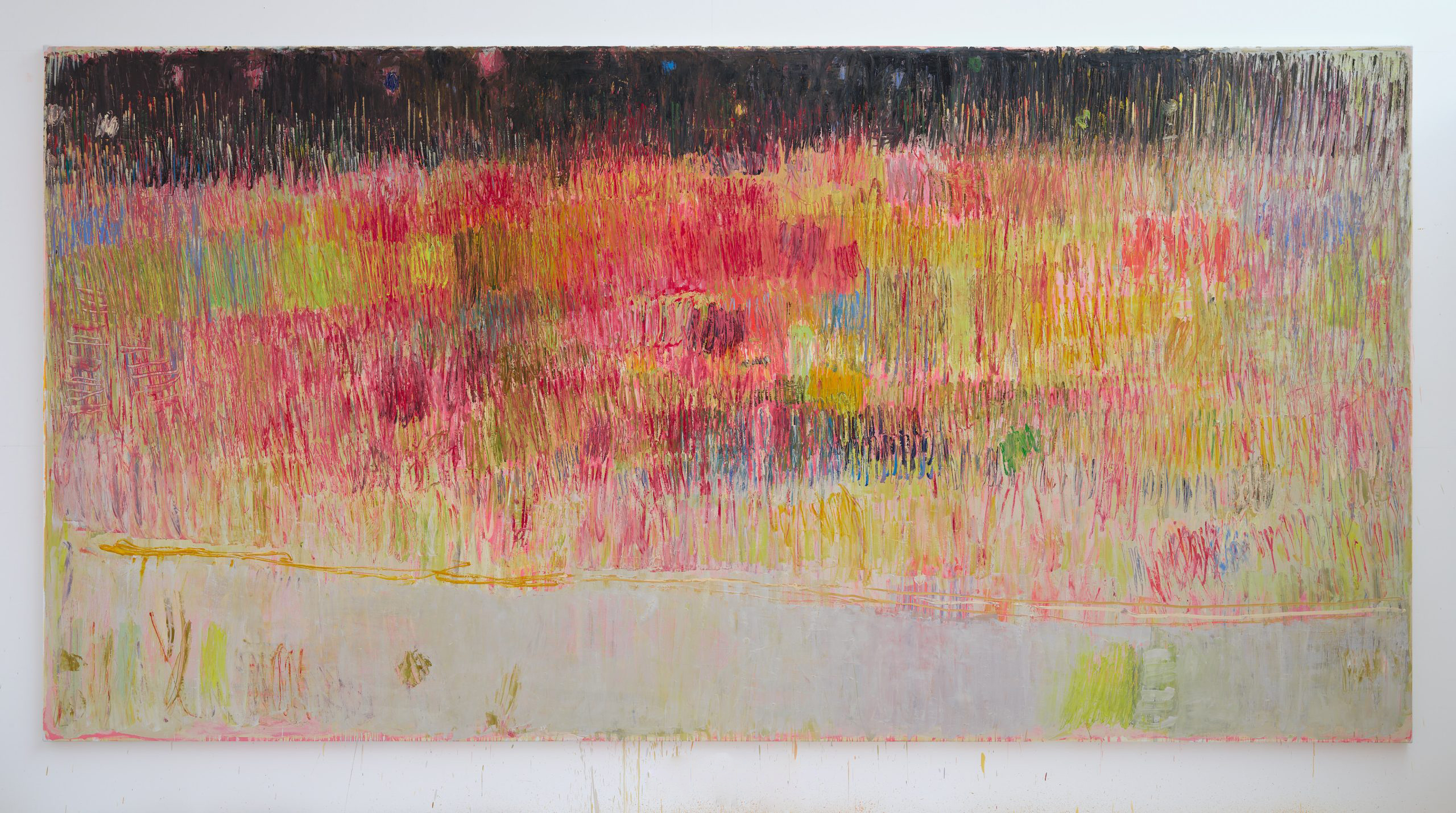
Christopher Le Brun, Rose, 2022
Christopher Le Brun’s Rose is part of a wider body of work entitled The Series, which groups together four paintings that each represent the developing phases of the year. Named Leaf, Rose, Wheat and Snow, the artworks are on display at Ladbroke Grove, arts venue and Carpenters Workshop Gallery’s flagship space, alongside three other paintings decorating the walls of the restaurant, designed by Vincenzo de Cotiis. The environment exudes natural light through the large windows, casting ever-changing weather patterns onto the paintings and giving the artworks the appearance of the seasons in flux. Rose represents the cooling autumn months when rosebuds start to bloom and the leaves turn a golden orange before they settle down for winter.
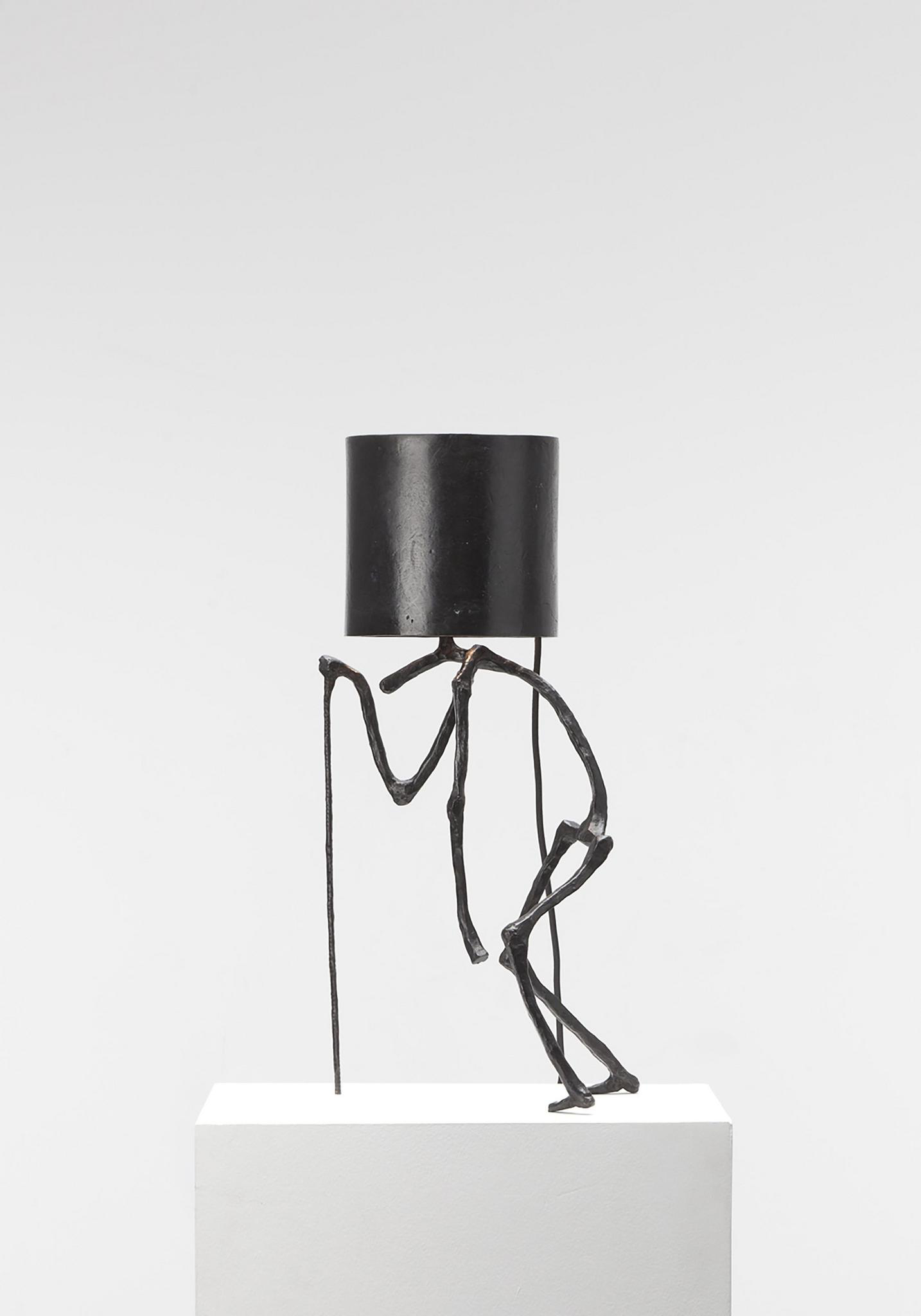
Atelier Van Lieshout, Old Man Lamp, 2018
Atelier Van Lieshout’s Old Man Lamp is a poignant self-portrait capturing the indomitable spirit of artist Joep van Lieshout. The piece is a visual narrative of the artist’s refusal to surrender, depicted through his metamorphosis as he transforms into his own gnarled walking stick. The lamp becomes a symbol of stamina as the character drags itself from one artwork to the next, echoing the enduring cycle of life – from love and reproduction to growth and inevitable death. The object invites viewers to contemplate the cyclical nature of existence and the symbiotic relationship between the artist and his creations.
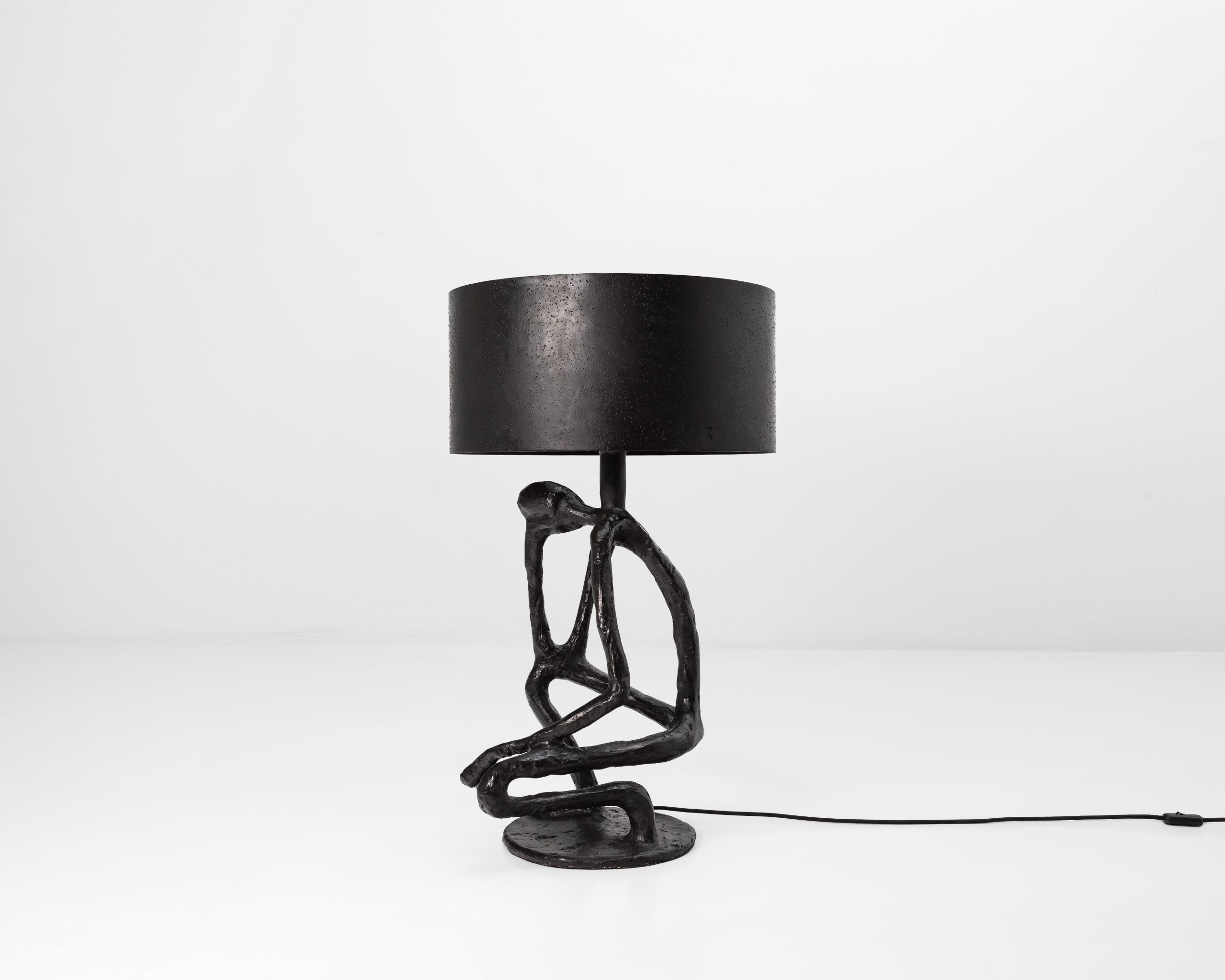
Atelier Van Lieshout, The Clever Lamp, 2019
Under the moniker Atelier Van Lieshout, Joep van Lieshout has established a multidisciplinary practice spanning art, design and architecture. Finding comfort in the crossfire of these disciplines, the artist defies the boundaries of function and fantasy through his experimental objects. The Clever Lamp is a distinctive addition to Van Lieshout’s latest body of work, RENEGADE – an arrangement of lamps constructed from found objects and simple materials. In this avant-garde collection, Van Lieshout defies the traditional roles of artist and designer, transforming any object – even his own pre-existing sculptures – into luminous works of art. The Clever Lamp exemplifies Van Lieshout’s rebellious approach, where every object, whether a new creation or an existing sculpture, becomes a unique source of light.
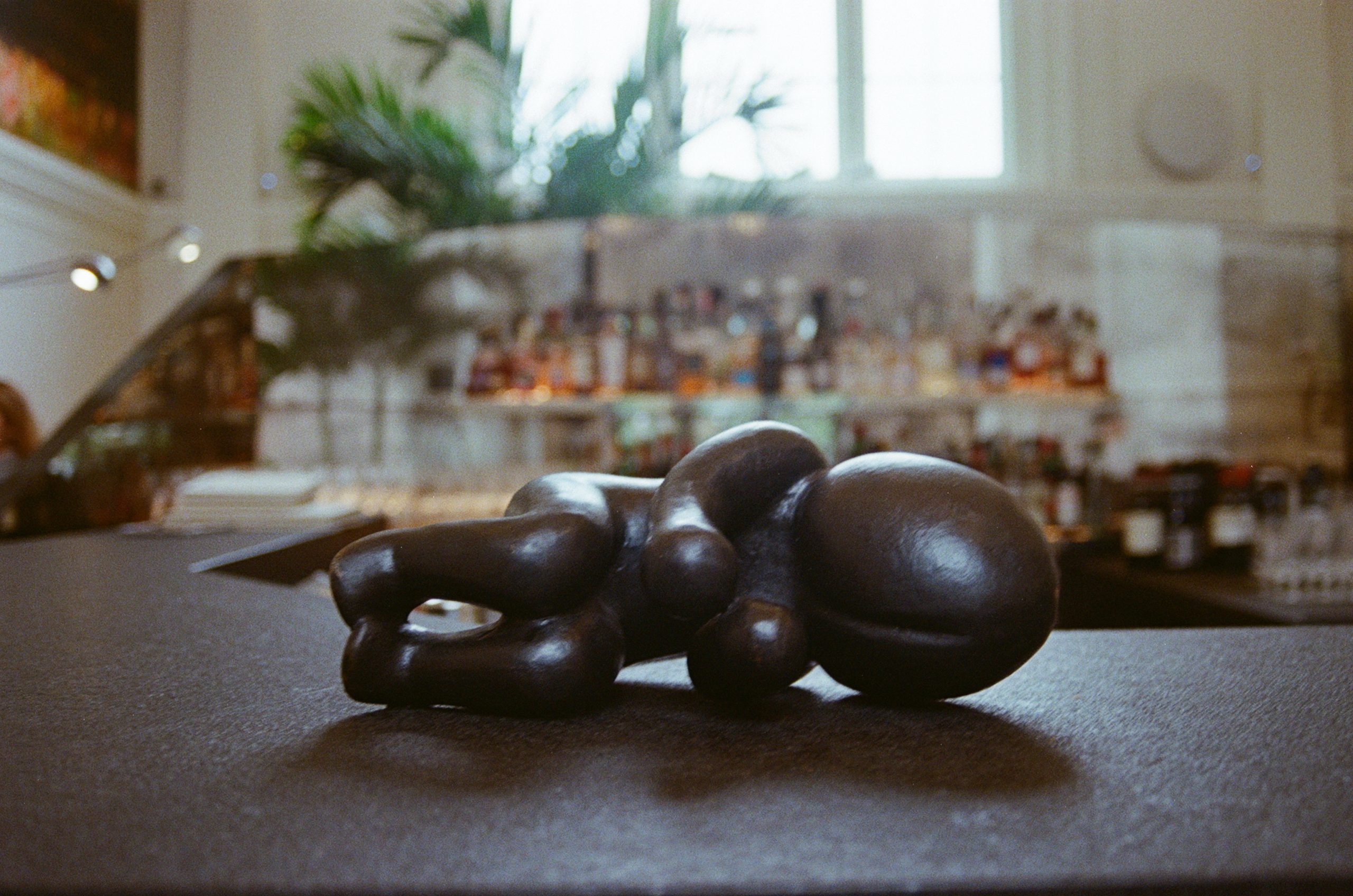
Atelier Van Lieshout, Dickhead Baby, 2008
Since Joep Van Lieshout founded his studio in Rotterdam, he’s reached acclaim for his bold, political and material-rich experimentations that question society. Dickhead Baby – a distinctive and thought-provoking sculpture that challenges conventional norms – is an apt example of this approach. Crafted in 2008 with bronze and forged into the shape of a smooth, faceless and fingerless baby, the artwork is a striking example of van Lieshout’s ability to merge the whimsical with an exploration of societal commentary. In the vocabulary of the artist, the object speaks a language of irreverence and satire, weaving absurd constructs of human identity into each groove and dent.
